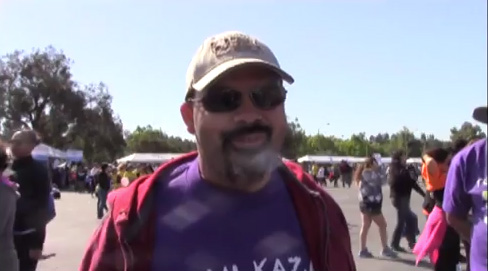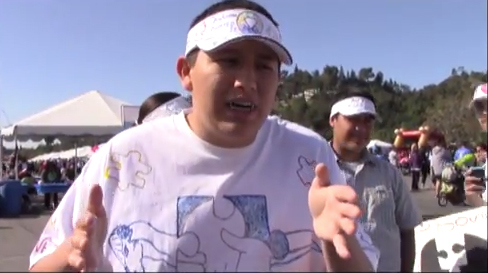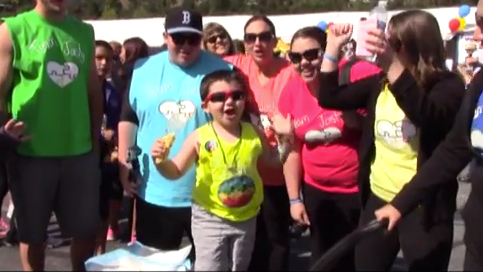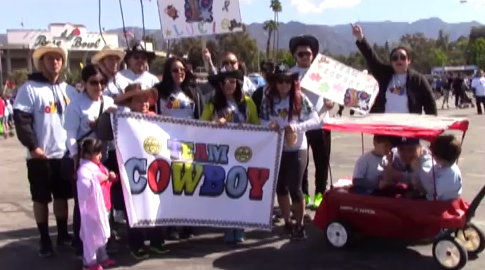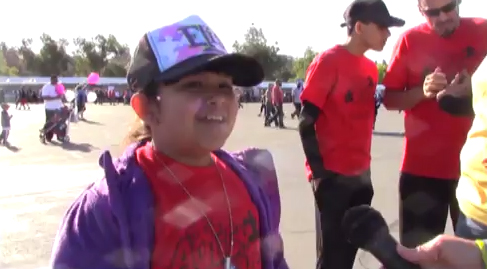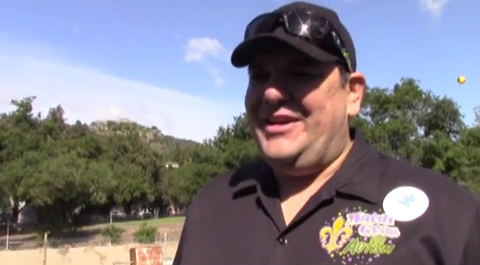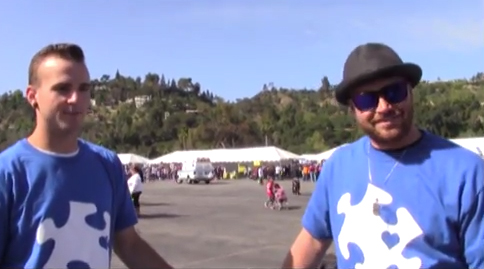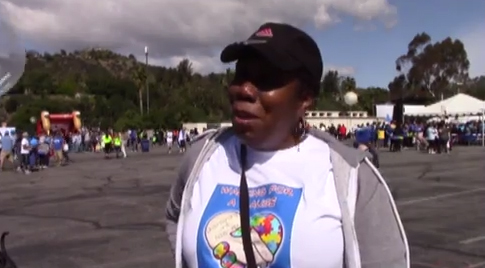The City of Los Angles was once named the mural city of the world. After a citywide ban on murals was lifted, murals in the city make a return.
People, both male and female, can pay for an escort-like service called Doumee in Koreatown. Doumees can earn well over $1,000 in one night, by partying or spending quality time in Koreatown’s bars, karaokes and cafes.
Locals call it the Sunken City: A part of Point Fermin that literally slid into the ocean in the 1920s. What remains today are housing foundations, railroad tracks and amazing street art.
Tap. The 13-year-old boy shook his knee repeatedly as he sat hunched over the wooden bench. Tap. Tap. He listened to his mother talk about his condition. Tap. Tap. Tap. Plaid shirt, blue jean pants and a distant gaze. He’s the average teenage boy, except he has autism.
Enrique Duarte was diagnosed with autism at the age of 11. Before that, doctors believed he had attention deficit hyperactivity disorder, more commonly known as ADHD, according to his mother.
This hyperactivity made it difficult for doctors to correctly determine his condition.
“He is very high functioning…because he doesn’t’ exhibit those classic characteristics of autism. We found a world renowned autism expert…and she assessed him,” said Enrique’s mother, Lisette Duarte, 36.
When his condition did not improve over some time, Duarte researched other conditions that matched her son’s symptoms.
Increased awareness, environment situations and broadened criteria for diagnosis are some factors researchers believe to be the cause for the increase of autistic children.
The Control for Disease Control recently reported that 1 out of every 68 children is diagnosed with autism. This is a 30 percent increase since last year.
Stephanie Sayes, an occupational therapist at the Glendale Adventist Play to Learn Center, said there are several theories why the numbers have increased dramatically.
Conditions, such as, Asperger’s Syndrome have been added to the listed criteria for diagnosis, according to Sayes, which makes it even more controversial when determining if a child is autistic or not.
“20 years ago, autism was linked with an intellectual disability and now it’s not. You can have somebody with normal intelligence or high functioning autism and they could still be considered on the spectrum, where as before they wouldn’t be,” said Sayes.
According to Sayes, there are a variety of theories but researchers do not know the real reasons for this increase. Researchers are still trying to determine the cause for autism.
Duarte said she knew there was something else that was affecting Enrique.
Even Enrique, himself, said he knew he was different, but he could not point his finger on it.
“I think I’ve always subconsciously knew I was autistic, but once I was diagnosed I was able to really understand myself,” Enrique said.
Unlike other middle school boys, he attentively looked into your eyes when he said this. He seemed to be so self-aware of his condition.
“[People] generalize it. I’m high functioning, they think everyone with autism is low, functioning, nonverbal, really behind and slow. Some people think it is contagious. That is why awareness is really important,” Enrique said matter-of-factly.
Duarte encouraged her son to become involved and outspoken about autism awareness, which he seems to gladly take on as a responsibility.
Just this year, he gave a speech in front of his school informing his peers about the new statistics of autism.
Enrique said only a couple friends know about his condition. Those who do know do not treat him any different. However, he said he does not say what he does not have to.
Although he wants to be normal, there are challenges when dealing with autism, according to Enrique.
Leading a normal student life became difficult when he had to attend several doctors’ appointments throughout the week.
Enrique must go to his physical therapists appointments, occupational therapist appointments, and he must receive treatment for his anxiety and bone and density disorders.
“You think college is hectic? Try this,” Enrique said.
Enrique had to move to several schools around Los Angeles until he finally found one that could accommodate to his needs, according to Duarte.
Enrique needs a customized curriculum to work around his appointments. Certain tasks may take him longer to do as well because of his inability to concentrate at times due to autism, according to Duarte.
The family was forced to move from place to place until they found a school fit for Enrique.
One place the Duarte family looked for a school in was Leimert Park, which proved to not be the best option for them.
There are only about eight schools in the Leimert Park area, according to the Los Angeles Times, which is not a big selection to choose from.
They finally found a small charter school in Eagle Rock that understood Enrique’s needs and accommodated to them. He was able to complete two full years of school consecutively and will be attending high school next year, according to Duarte.
Duarte had to quit her job at a law firm in order to be there for Enrique.
“I had to make a choice…continue my career or makes sure my son’s needs were met,” said Duarte.
She and her husband now take turns in bringing him to his appointments.
Enrique is not the only child who was diagnosed with autism. His 9-year-old sister, Elisse, was diagnosed just six months ago.
“I think it’s been hard for her. She knew about Enrique’s condition and was a very supportive sibling and now she has it too. I don’t think she wanted to accept it at first,” Duarte said.
With two children who have to go to appointments and special attention, it became a little more difficult for Duarte to manage.
Duarte said research on the resources around you is very helpful when dealing with autism.
Dr. Traci Martinez, a physician at the Glendale Adventist Play to Learn Center, said early treatment is key. According to Martinez, the bigger results are seen in children treated as soon as possible.
There are a few resource centers in Los Angeles. Autism Speaks, a non-profit organization, tries to make it easy for families by putting resource tools on their website.
There is only one private school with autism services near the Leimert Park area. All other schools and resource centers are located on the edges of Los Angeles, according to the Autism Speaks map.
If a family lives in central Los Angeles, their closest options are Culver City, Beverly Hills or downtown Los Angeles.
The Duarte family eventually had to move because of the long distance between resource centers, school and home, according to Duarte.
Enrique’s life has benefitted from the move to his new school in Eagle Rock. He is allowed to be treated as an equal and have a continuous curriculum, according to Duarte.
Before Enrique found a school that fit him he suffered from insomnia, weight loss, anxiety and was failing in his classes.
Duarte said she received a call from his teacher everyday. When she asked for an assessment to see why this was happening to Enrique the school said no.
“Parents almost have to be ‘special ed.’ attorneys or experts,” Duarte said.
Enrique is improving, according to Duarte, and is enjoying activities other kids enjoy.
He has a love for basketball (he wants the Clippers or the Heat to win this year’s playoff games) and likes to play Halo 3 in his spare time.
When asked if he has been watching basketball lately he says he wishes he could watch more, but he has no time because of his doctors appointments and school.
Sitting on the wooden bench still hunched over, intently looking off in the distance. The tapping has stopped. The conversation has returned to the subject he is passionate about.
Enrique pauses for a moment and says, “How do you be a friend to someone who is autistic? Just treat them as if they were a normal person.”


